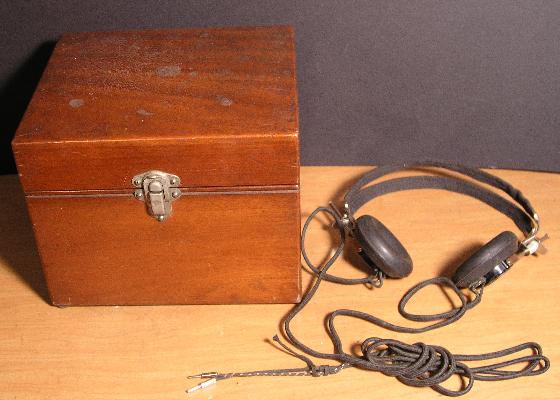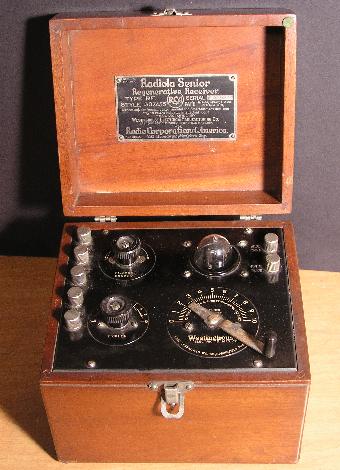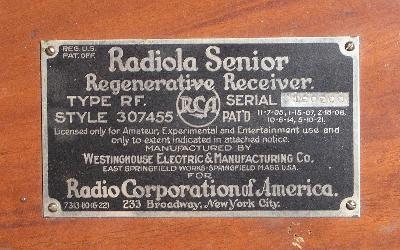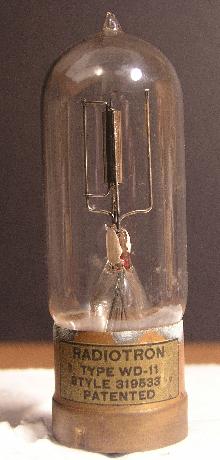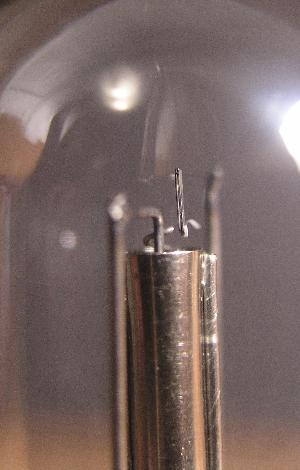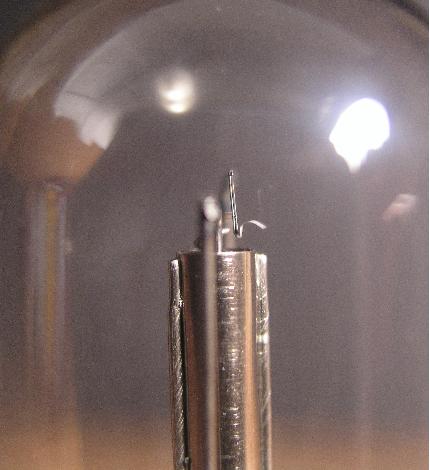1922 Radiola Senior
This is a 1922 Radiola Senior one-tube battery-powered radio contained in a small wooden box
with a hinged lid. The radio was manufactured by Westinghouse Electric and Manufacturing
Company for the Radio Corporation of America.It uses a WD-11 triode tube as
as a regenerative detector. Below is a closeup view of the dials and controls of the
radio.
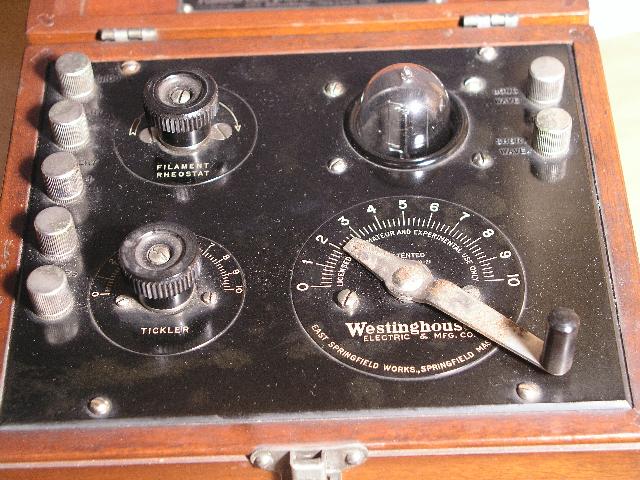
On the top left, there is a control for the tube filament. It is a rheostat that
controls voltage (and current) for the tube filament. It also functions as
as an on/off switch. The top of the tube can be seen at the top right. Below the
rheostat, there is a "tickler" control that controls the level of regenerative
feedback for detection. The tickler control rotates a coil inside another larger coil and is
turned until the circuit just begins to oscillate. This condition provides the
most sensitivity for the radio.
To the right of the tickler, the rotary lever rotates another coil inside larger
coil and tunes the radio to the desired station.
The bonding posts on the left are connections for the two batteries (A- battery
for the filament and B+ battery for the plate high voltage)and for the headphones.
The B+ voltage is supplied to the tube through the headphones.
The two binding posts on the right are connections for two different antennas -
one antenna is for long wave and the other is for short wave.
Below is a picture of the inside of the radio.
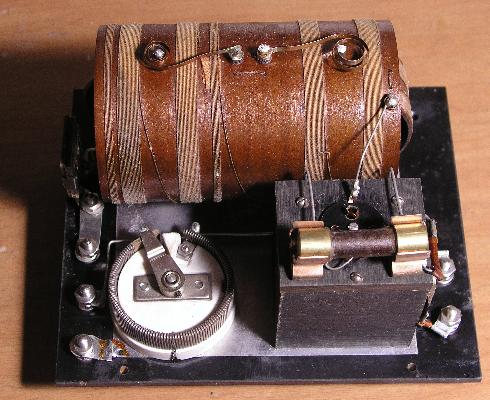
At the top of the photo is the large coil previously mentioned. The two spiral coiled
wires on top the large coil are service loops for the tickler and tuning coils. The filament rheostat
can be seen on the lower left. The tube cavity and socket can be seen on the lower right.
The grid leak resistor is on the top of the tube cavity. Below is a side view of the
inside of the radio.
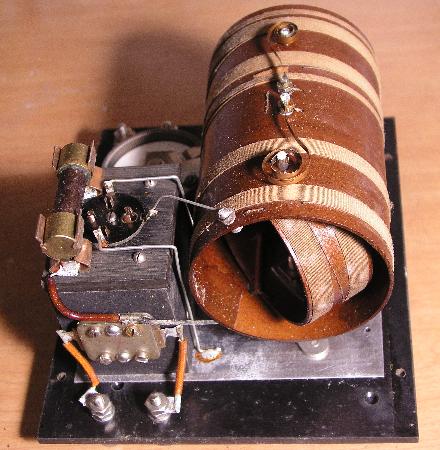
You can see the rotary tuning coil inside the large coil in this view.
The WD-11 tube is a rare tube. One that works is even more rare. Unfortunately,
the WD-11 tube that came with this radio is defective - it has an open filament.
Below are three views of the WD-11 tube. The two closeup views show a "whisker"
that has become disconnected from the spiral filament that can be seen in the
center photo.
Tube Compliment |
| Detector |
Rider's Manual Page # |
| WD-11 |
1-5 |
Below is a photo of the radio with a pair of Trimm "Featherweight" headphones. The headphones
did not come with this radio, but they are ideal to work with this radio. The
headphones are high impedance and are suitable for use with crystal radios, too.
